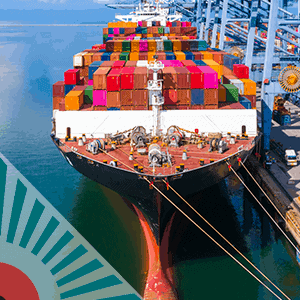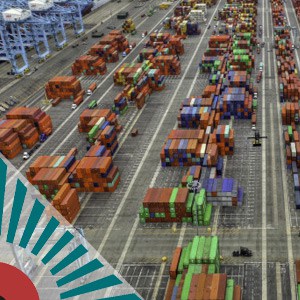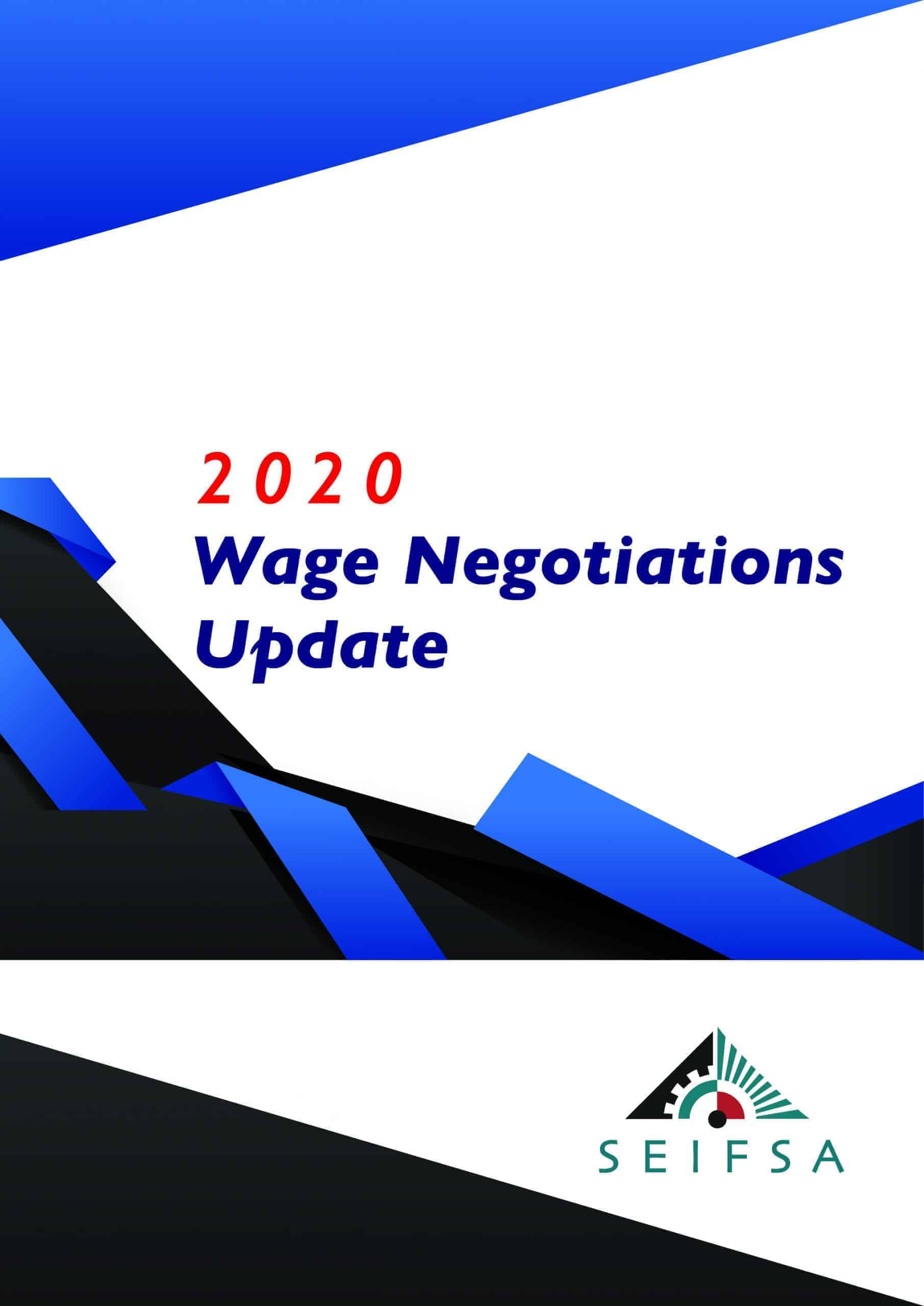SEIFSA Welcomes Move To Level 1 Of National Lockdown
JOHANNESBURG, 17 SEPTEMBER 2020 – The decision to move the country to level 1 of the national lockdown put in place to fight the spread of COVID-19 will give struggling businesses in the Metals and Engineering (M&E) industry much-needed momentum in their recovery efforts, Steel and Engineering Industries Federation of Southern Africa (SEIFSA) Chief Economist Dr Michael Ade said today.
After nearly six months of lockdown restrictions that included, among other stringent measures, the closure of the country’s borders, businesses will finally be able to ramp up their importing or exporting activities. However, as President Cyril Ramaphosa conceded during his address to the nation last night, global demand for goods will remain constrained in the medium term, Dr Ade said.
“The anticipated increased in export activity bodes well for export-oriented manufacturing, in line with the national industrial policy framework, as it will result in increased production activity and access to global markets, enabling businesses to ramp up their recovery,” he said.
Dr Ade noted that businesses that rely on imported raw materials have been significantly set back by restricted access to supplies due to border restrictions.
“The year 2020 has resulted in unprecedented pain for many businesses in the M&E sector, especially those that principally import raw materials as they have been producing under increasing costs and diminishing returns due to the higher cost of raw materials. The move to level 1 and subsequent liberalisation of international travels on October 1 means that executives will be able to travel and conclude contracts towards selling or importing raw materials at cheaper prices in order to manufacture and sell, thereby improving their margins and profits,” Dr Ade said.
He said while the latest developments imply that there will be a boost to business activity towards total reinstatement of supply chains, enabling companies to carry out trade and production activities without disruptions, it is up to South Africans to ensure they create an enabling environment for business recovery. He said that, based on necessary anti-COVID-19 precautionary measures like social distancing remaining in place longer, SEIFSA has revised its growth forecast for the sector for 2020/21 from the initial 0,6% to -9,1%.
Dr Ade said while it was important for business to take advantage of the Government’s R500-billion loan guarantee scheme by seeking low-interest loans to stay afloat, business recovery would require State-owned entities like Eskom and Transnet “also to come to the party”. He said it was vital that Eskom ensured reliable power supply at all times.
Dr Ade also stressed the importance of increased logistical support for companies seeking to export to regional markets. He said municipalities and State-owned companies had to procure South African designated products for local production to stimulate economic recovery.
“There is no doubt that South Africa is headed down a long, difficult path to economic recovery. However, we are cautiously optimistic that business and Government will continue to work together as the Government concludes its economic reconstruction and recovery plan which should ensure not only the preservation of jobs, but also the creation of additional opportunities for sustainable employment,” he concluded.
SEIFSA Joins Forces With Former ABB Southern Africa MD Leon Viljoen To Support SMEs
JOHANNESBURG, 9 SEPTEMBER 2020 – The Steel and Engineering Industries Federation of Southern Africa (SEIFSA) has partnered with manufacturing industry veteran Leon Viljoen to provide support, guidance and advice to SMEs to help them run successful and sustainable businesses.
Mr Viljoen has more than 20 years’ experience in project and business management and as a C-suite-level executive at large businesses, such as ABB South Africa and Powertech Transformers, and has led efforts to optimise business operations and improve performance.
The partnership comes at a time when many SMEs are facing closure, following the COVID-19 pandemic and the resulting lockdown that saw many companies unable to trade amid restrictions to movement to fight the spread of the virus. This is in addition to the challenges they had already been facing in a country where about 70% of SMEs fail within the first two years, according to the Small Business Institute.
SEIFSA Operations Director Lucio Trentini said the partnership with Viljoen was important because small businesses are widely recognised as the lifeblood of economies. He cited research by McKinsey, which found that small and medium enterprises (SMEs) in South Africa make up 98% of businesses. However, many of these businesses struggle under the strain of several challenges, including bureaucratic red tape and lack of access to finance.
“Sixty-six percent of the companies that are affiliated to our member Associations are small businesses. We, through the SEIFSA Small Business Hub, strive to assist these companies to navigate a very tough operating environment,” Mr Trentini said.
Mr Trentini said Mr Viljoen’s demonstrated expertise within the manufacturing industry will ensure SMEs in the sector receive relevant support and advice at a time when they need to rework their strategies and operations in order to adjust to a COVID-19 environment.
Mr Viljoen said he was pleased to be able to work with SEIFSA on a matter that was close to his heart – the success of businesses by innovating and improving operations from within before looking externally for support.
“My support is not about making good businesses great,” Viljoen said. “It’s about helping businesses go back to the basics and creating a strong foundation in order to become sustainable, and then move on incrementally to greatness.”
As part of the partnership, SEIFSA and Mr Viljoen will be hosting a series of webinars on what SMEs need to focus on to become sustainable businesses. The first webinar discussing the series will take place on 17 September 2020, to be followed on 6 October 2020 by a webinar covering culture and strategy.
For more information or to register for the webinars, please contact sales@seifsa.co.za.
Second-Quarter GDP Numbers a Harbinger of More Dismal Data Due To National Lockdown, says SEIFSA
JOHANNESBURG, 8 SEPTEMBER 2020 – As expected, the countrywide lockdown to fight the spread of COVID-19 from 27 March 2020 severely affected economic activity in the second quarter as real output contracted, plunging the economy deeper into depression, Steel and Engineering Industries Federation of Southern Africa (SEIFSA) Chief Economist Dr Michael Ade said today.
“The impact of the nationwide economic shutdown is visible in the numbers as there was virtually no economic activity in April, spanning lockdown alert level 5. Many companies, including the large entities, were not ready for the sudden shock that impacted negatively on supply chains and on global demand and exports,” Dr Ade said.
He said the data, which provides a fair depiction of overall domestic consumer-derived demand and industrial production, provides insight to what we can expect in terms of other macro-economic data, including the employment numbers, the release of which has been postponed to later this month. He said as unemployment rises, middle-class income stagnates or even declines, reducing the pool of buyers for goods produced by business, which leads to reduced business activity and investment.
Alarmingly, South Africa’s real gross domestic product (GDP) decelerated to 51% in the second quarter of 2020, down from a revised 1,8% quarter-on-quarter (q/q) decrease recorded in quarter one of 2020, extending the economic recession into its fourth quarter. Nearly 91% of industrial sectors performed poorly, with the manufacturing sector recording the largest negative contribution to GDP growth, with a -10,8 percentage point decrease.
Dr Ade said the poor GDP figures are underpinned by poor year-on-year growth in manufacturing production data, low sales and a generally poor business expectation for the relevant quarter, despite an uptick in the manufacturing purchasing managers index (PMI) in May and June.
“In addition, production costs in the second quarter of 2020 were higher than in the first quarter, as scarcity and higher demand for inputs pushed prices and operational expenses up. Companies were in uncharted territory where they had to still incur costs, despite the lockdown, but could not produce and sell. The situation was made precarious by prevailing subdued domestic demand and the companies’ inability to explore new markets or export. These impediments also affected their margins negatively,” Dr Ade said.
He added that the majority of companies in the Metals and Engineering (M&E) cluster were expected to benefit from higher domestic selling prices as captured by the producer’s price indices (PPI) for intermediate manufactured goods, enabling them to improve on margins and profits.
“However, the PPI also measures selling price inflation for final manufactured goods and its poor performance in quarter two of 2020, relative to quarter one, constrained companies from invariably increasing selling prices. The constraint on increasing selling prices, together with lower output in the M&E cluster, negatively impacted on firms’ total revenue, while also negatively affecting profitability, thus leading to a vicious cycle,” he said.
Still, Dr Ade lauded ongoing initiatives to improve supply-side dynamics that could boost third-quarter growth in 2020 as the economy opens up, further supporting the expansion of the M&E sub-components in the short to medium term. He cited the implementation-oriented Infrastructure Investment Plan for South Africa and the Steel Master Plan, which are aimed at reigniting business activity via improved trade, domestic demand and competitiveness, as holding huge potential for the M&E industry.
Dr Ade pointed out that the economy was already under pressure before the commencement of the nationwide lockdown at the end of March, with the level of real GDP 0.1% lower in the first quarter of 2020 than a year earlier. He said although manufacturing production levels dropped significantly in April, May and June of 2020, the expectation is for a better performance in quarter three of 2020.
“Industrial production can only go up from the abyss businesses found themselves in because of the COVID-19 pandemic. Broader recovery is a must, given the importance of the manufacturing sector – including its M&E sub-cluster – in boosting local jobs and economic growth,” Dr Ade said.
Ends
Issued by:
Mpho Lukoto
Communications Manager
Tel: (011) 298 9411 / 082 602 1725
Email: mpho@seifsa.co.za
Web: www.seifsa.co.za
COVID-19: South Africa - Extension of TERS benefit to 15 September 2020
On Friday, 4 September 2020, the Director-General of the Department of Employment and Labour, Mr Thobile Lamati, announced that the TERS Directive published on 11 August 2020 shall be extended to 15 September 2020.
This means that the TERS benefit shall remain available for the categories of employees specified in the 11 August Directive, namely those whose employers are:
- not yet permitted to commence operations, either partially or in full, as a result of the Regulations published in terms of the Disaster Management Act, 2002, such as restaurants and gyms;
- unable to implement special measures in respect of vulnerable employees, or to make alternative arrangements for them to work from home; and
- unable to make use of the employees’ services either fully or partially because of operational requirements, in particular, the need to limit the number of employees at the workplace through rostering, staggering of working hours, short time, and the introduction of shift systems.
In terms of the Director-General’s announcement, applications for April to July 2020 will close on 15 September 2020 and no late applications will be considered. Applications for TERS benefits in respect of August and up to 15 September 2020 will close on 30 October 2020. Should any of these dates change, we will publish a follow-up newsflash.
The Direction extending the 11 August 2020 Directive has not yet been published. Once received we will circulate.
SEIFSA Encouraged By Uptick In PMI As Lockdown Restrictions Ease
Overall business activity in the manufacturing sector, as captured by the headline ABSA Purchasing Managers’ Index (PMI) for August 2020, provides some level of reassurance to companies in the Metals and Engineering (M&E) sector, Steel and Engineering Industries Federation of Southern Africa (SEIFSA) Chief Economist Michael Ade said today.
Dr Ade said the PMI’s performance in August, despite a tough domestic operating environment, provides insight to the improving perception held by company executives, as they aim to further improve on production with the easing of COVID-19 restrictions.
Dr Ade said the leading indicator, which acts as a preview to industrial activity before it happens, is slowly picking up and provides a basis for businesses to use excess capacity, boost production and increase overall contribution to economic growth. Correspondingly, the increase in the PMI is important in influencing how producers and relevant stakeholders in the broader manufacturing sector view the coming month, enabling them to confidently place orders in advance.
The latest seasonally-adjusted preliminary PMI data shows the composite PMI increasing to 57.3 points in August 2020, from 51.2 points in July 2020.
Encouragingly, all the sub-indices performed well in August when compared to July, with the new sales orders sub-index increasing from 53.4 points to 71.7 points, the employment sub-index increasing from 33.0 points to 39.0 points and the production sub-index rising from 62.9 points to 67.0 points.
“It is important for companies to build on the encouraging signs of green shoots in industrial activity to improve their chances of survival and maintain existing jobs,” said Dr Ade.
He said the uptick in industrial activity was in line with broader domestic economic activity, which is slowly picking up with the easing of lockdown restrictions, as evidenced by the latest set of business-cycle indicators from the South African Reserve Bank. However, he cautioned that it was still important for employees to remain vigilant and not drop their guard and that employers should place an emphasis on both the economy and the health of their workers since the worst of the Coronavirus pandemic is not yet over.
Dr Ade said it was crucial that industry stakeholders and policy makers jointly address the issues that may constraint short-term growth drivers, such as trade and logistical issues relating to the pandemic, in order to limit the pandemic’s effects on people and the economy.
“Trade determines the demand for a commodity and the over-arching challenge of poor demand can only be addressed through increased inter- and intra-industry trade. This implies that more attention should be directed at improving logistical constraints and boosting supplier deliveries in the M&E value chain towards improved trade. For perspective, supplier deliveries carry the highest weighted average (0.40) of all the sub- PMI indices, highlighting the importance of having a functional logistics process towards boosting supply chains activities and trade in the M&E sector,” he said.
SEIFSA And Trade Unions Adopt Historic, Stand-Still Main Agreement
JOHANNESBURG, 1 SEPTEMBER 2020 – The 19 employer associations affiliated to the Steel and Engineering Industries Federation of Southern Africa (SEIFSA) and the industry’s five trade unions today formally adopted the historic 2020-2021 stand-still Main Agreement concluded last month.
The collective agreement, adopted in line with the Labour Relations Act, now enjoys the status of a collective industry agreement and marks a watershed moment in which business and labour together recognised the devastating impact the COVID-19 pandemic has had on companies and employees across the Metals and Engineering (M&E) sector.
The five trade unions that are signatories to this agreement are:
- The National Union of Metalworkers of South Africa (NUMSA);
- Solidarity;
- United Association of South Africa (UASA);
- The Metal and Electrical Workers Union of South Africa (MEWUSA); and
- The South African Equity Workers Association (SAEWA).
Collectively, the membership of these trade unions accounts for 49,8% of all workers employed by employer organisations on the bargaining council. The SEIFSA-affiliated employer associations represent 56% of all workers employed by employer parties on the bargaining council.
SEIFSA Operations Director Mr Lucio Trentini, who represents the federation on the MEIBC Management Committee, said the agreement was significant because it was an acknowledgment by all the negotiating parties of the devastating impact of the COVID-19 pandemic on companies and on the livelihoods of employees in an economy that was already in recession.
The pandemic and the resulting nationwide lockdown to curb its spread have pushed many businesses to the brink of collapse, with unemployment reaching a record 30,1%.
“In response, we have all agreed to lock in existing terms and conditions of employment over a 12-month period, freezing the current wage rates until 30 June 2021 to enable the industry to adjust to a post-COVID-19 reality. This is unprecedented not just in this sector, but in the country in general,” Mr Trentini said.
The agreement, he said, was the result of a collective bargaining partnership founded on understanding, respect and trust, which SEIFSA has played a key role in nurturing since its founding nearly 80 years ago.
“The agreement gives our industry an opportunity to preserve jobs while seeking solutions that will help to turn around not only the fortunes of the sector, but the economy as a whole,” Mr Trentini concluded.
Increased Selling Price Inflation Offers Strained Businesses Room To Manoeuvre On Costs, Says SEIFSA
JOHANNESBURG, 27 AUGUST 2020 – The increase in the Producer Price Index (PPI) for intermediate manufactured goods in the Metals and Engineering (M&E) sector is expected to ease the pressure of struggling businesses as demand stagnates despite easing lockdown restrictions, the Steel and Engineers Industries Federation of Southern Africa (SEIFSA) said today.
The data released by Statistics South Africa (Stats SA) this morning indicates that the annual percentage change in the PPI for intermediate manufactured goods increased from 1.4% in June to 2.4% in July. The increase is consistent with the annual change in the PPI for final manufactured goods, which also increased from 0.5% in June to 1.9% in July.
According to SEIFSA Economist Marique Kruger, the increasing selling price inflation means companies now have more leeway to pass cost increases to key players in the market, thereby reducing pressure on margins.
“Businesses are generally struggling and continuous increases in operating costs and erratic energy supply are straining business operations, impacting negatively on their competitiveness,” Ms Kruger said.
“The increase in overall selling prices for July is, therefore, encouraging as it allows increased room for companies to manoeuvre. This is especially given that galloping energy costs and fluctuating imports or logistics costs – underpinned by volatile fuel prices and distorted supply chains – have made it difficult for businesses to pass on cost increases to consumers,” she said.
Instead, companies have resorted to the unsustainable practice of absorbing cost increases that occur within a short space of time in order to retain customers, especially if they had already recently adjusted their selling prices, Ms Kruger added.
She added that factors such as the recent reintroduction of load shedding – which is a significant challenge for energy-intensive M&E industries – and prevailing uncertainty due to the Coronavirus pandemic – even as lockdown restrictions continue to be relaxed – pose major challenges to both industry stakeholders and policy makers as these may lead to a further slowdown in growth, employment and investment.
SEIFSA Calls For Urgent Support For Struggling Businesses Following The Easing Of Lockdown Restrictions
JOHANNESBURG, 20 AUGUST 2020 – As South Africa ends its first week under alert level 2 of the national lockdown to curb the spread of the COVID-19 pandemic, the Steel and Engineering Industries Federation of Southern Africa (SEIFSA) is hopeful that increased economic activity from the reopening of key sectors will boost the recovery of metals and engineering businesses brought to their knees by the pandemic, SEIFSA Chief Economist Dr Michael Ade said today.
The demand for metals and engineering products was derived from a demand for finished or final products manufactured by other industries, Dr Ade said. He hoped that increased business activity from other industries and the consequential demand for consumer goods due to people now being able to earn some level of income would, in turn, result in higher demand for intermediary goods.
He gave, as an example, increased demand for vehicles, which was likely to have positive implications for the Metals & Engineering (M&E) sector since, on average, 900kg of steel is used per vehicle manufactured, with components spanning the body structure, panels, doors, trunk, engine block cast iron and fuel tank.
“Manufacturing activity may need to be ramped up as demand consistently increases, but this could be a difficult challenge, especially for small and medium enterprises (SMEs) in the M&E and the broader manufacturing sector, as cashflow has been drastically reduced as a result of little or no business activity during the lockdown period,” he said.
The COVID-19 pandemic has added to the plethora of challenges already faced by SMEs in the M&E sector, such as high operational costs and reduced demand for their goods, thus impacting negatively on production, margins and profits. SMEs represent 66% of the member companies SEIFSA represents as a national federation of employer associations.
Dr Ade said generally, SMEs made up the majority of employers in South Africa. He cited research by McKinsey, which showed that SMEs made up more than 98% of businesses in South Africa and employed up to 60% of the country’s workforce across all sectors. As a result, he said, it was important for policy makers to provide relevant support to SMEs, which would enable them to navigate this critical time and sustain production as economic activity gained momentum.
“SMEs are in deep crisis and desperately need financial assistance in order to stabilise operations and improve margins. Cash flows are extremely tight and some businesses have closed down. Any further delays may complicate matters, leading to significant job losses and even more company closures,” Dr Ade said.
He said the Federation believed that liquidity or cash flow was the most significant area where the Government could intervene urgently to support the industry. He proposed that the Government, through one of its funding institutions, created a temporary lending/bridging facility for SMEs to allow them to continue operating.
Dr Ade said while there had been various COVID-19 relief funds made available for SMEs during the pandemic, many companies could not take advantage of these funds for a number of reasons, including BEE status and credit-qualifying criteria. He said it was important that the Government created a fund that would enable those businesses that had fallen through the cracks to secure funding.
Dr Ade said there was also a need to promote access to competitively priced inputs for the mid- and downstream sectors: “Locally-produced steel is considerably more expensive than imported steel (especially prior to the imports tariffs), putting local producers on the back foot when trying to compete with the cheaper Chinese imports. The loss in competitiveness is driving most sub-industries to import components, leading to high import penetration of components and standard parts.”
Dr Ade also called for an immediate review of the quantity of imported products that could be manufactured locally to prevent a flood of products into the market from countries that had opened up earlier after their respective COVID-19 lockdowns and had surplus inventory which could then be dumped into the South African market.
“We believe that it is critical that the Government provides immediate support to businesses – and SMEs in particularly. It is this short-term assistance that will arrest ongoing de-industrialisation and ensure a need for the long-term support proposed by the Government,” Dr Ade said.
Deferment of AfCFTA Launch still presents an opportunity for local business to grow exports share
The AfCFTA is an initiative rooted in the AU’s Agenda 2063, and the main objective of the AU is to create a single continental market for goods and services with free movement of people and investments. In doing so, intra-African trade will invariably be expanded across the continent, thereby increasing competitiveness and supporting economic transformation on the African continent.
The aim of the AfCFTA is to ultimately reduce and eventually eliminate customs duties and non-tariff barriers on goods and allow free provision of services in priority sectors.
Unfortunately, the launch of the African free trade zone has been moved to a tentative date in January 2021 over Covid-19 pandemic lockdowns across 42 out of 55 countries in the continent.
In case of conflict of protocols under the AfCFTA agreement “State Parties that are members of other regional economic communities, regional trading arrangements and custom unions, which have attained among themselves higher levels of regional integration than under this Agreement, shall maintain such higher levels among themselves”, which means that existing Regional Economic Communities (RECs) will be maintained.
In every crisis there is an opportunity and the decision to delay the launch may allow unprepared local companies to re-jig export processes and maximise gains when the Africa market becomes conducive. Currently, trade is practically impossible due to containment measures from African countries. Intra-African trade is marred by traffic at the borders as trucks scramble to deliver essential goods, and inward-looking policies as each country seeks for ways of saving lives and the economy.
Current status of the AfCFTA and brief insights
To date, a total of 54 of the 55 AU Member States have signed the AfCFTA, while a total of 30 countries or 54.5 percent of AU Member states (including South Africa) have ratified the agreement which means that that the Agreement is effective in these countries and that all rights, provisions and obligations apply.
The AfCFTA frameworks covers various aspects including Trade in Goods and Services, Investment, Intellectual Property Rights and Competition policy. Trade in Goods and Services are being negotiated during the first phase and there are negotiations on a number of issues that are still ongoing. Phase 2 of the negotiations will cover investment, property rights and competition policy and are expected to be finalised by January 2021. Specifically, there are ongoing negations with rules of origin for goods and schedules of specific commitments for services.
Ideally, the aim was to finalise negotiations on tariffs concessions on goods trade and commitment on trade in services and rules of origin, so that trade under the AfCFTA can begin on the 1st of July 2020. However, this looked increasingly unlikely, given the Covid-19 pandemic. Resultantly, the implementation of the AfCFTA on July 1 may be delayed by the AU for up to seven months due to the Covid-19 pandemic.
Prospects/benefits to local companies and especially the Metals and Engineering (M&E) industry
The idea behind this free-trade agreement is to bring down trade barriers and establish an African single market and customs union. The prospects/benefits for local companies include:
- Large market size
Africa has a population and GDP roughly the size of India but is divided into 55 AU Member States. Many African countries are too small to attract the necessary investment for industrial growth. Businesses also face on average tariffs of roughly 6.9 percent when they trade across the 107 unique land borders. Moreover, many businesses have to deal with substantial non-tariff barriers, regulatory differences and divergent technical standards which increase trade costs by an estimated 14.3 percent. The AfCFTA therefore aims to consolidate and integrate the African continent into a single market with an estimated GDP of US$3 trillion.
- Economies of scale in manufacturing
The central idea around the AfCTA is to reduce and eventually eliminate barriers to trade to enable companies across Africa to trade in a single market. In reducing the costs involved with trading, local manufacturing companies will be able to increase production, leading to economies of scale. Multinational exporting companies will also be able to streamline the movement of inventory between branches across the continent.
- Potentially boost manufacturing investment and exports to serve a single African market
Despite housing nearly 17 percent of the global population, Africa accounts for only 2.8 percent of global investment stock. For any investors to qualify for the benefits and preferences under the agreement, they must ensure that production involves sufficient transformation or value-addition in an AfCFTA Member State.
As a result, exporting M&E businesses also stand to benefit from the agreement by linking up with African businesses and contributing towards inputs, intermediate goods and supportive services.
- Cost competitiveness and diversification
The combination of a single African market, cost competitiveness and its growing working-age population makes Africa potentially a compelling destination for multinational companies looking to diversify away from China-centric global value chains. Local companies and especially those of the M&E sector should be part of these new developments and not score own goals.
Manufacturers pulling out of China are considering Africa to diversify their supply chain. With the advent of the AfCFTA, it is estimated that Africa’s GDP will grow at a rapid pace, from an estimated US$3 trillion in 2020 to as much as $16 trillion by 2060. This presents huge market opportunities for local companies.
By decreasing the cost of trade and the facilitation of business expansion, the AfCFTA provides opportunities whereby businesses will not only gain from, but also contribute to Africa’s significant market growth.
- Increase in exports volume
In bringing down trade barriers, the agreement has the potential to increase manufacturing exports. It is estimated that industrial exports in Africa will benefit the most from the AfCFTA and will invariably contribute to the industrialisation of the continent. Local companies should ensure that they are part of this by proactively getting ready, if not already exporting. Moreover, the AfCFTA is forecast to boost intra-African industrial products exports by between 25 percent and 30 percent, which translates to a monetary increase of between US$36 billion and US$43 billion.
Once trade begins under the AfCFTA, it means that tariffs on 90 percent of goods traded will be reduced in equal annual installments until they are eliminated within a period of 5 years for countries that are not classified as Least Developed Countries (LDCs) and withing 10 years for LDCs.
Example: If a product faces a tariff of 25 percent when imported into a non-LCD, it means that once trade begins under the AfCFTA (currently 1 July 2020), the tariff would be set at 20 percent from July 2020 and 15 percent from July 2021 etc. until the product is traded duty-free.
- Companies have the opportunity to improve margins and sustainability and expand their international footprints
Companies must ensure that their products are competitive in the foreign market, minimise international trade challenges and avoid pitfalls that arise when dealing in foreign markets.
SEIFSA provides comprehensive, generic, up-to-date courses on export development for local companies looking at either venturing into the rest of Africa or overseas, consolidating their positions or increasing their exports market share
Historic Standstill Agreement Reached
Given the unprecedented socio-economic challenges brought about by the COVID-19 pandemic, the SEIFSA-affiliated Employer Organisations and the sector’s five biggest trade unions today concluded an unprecedented stand-still agreement which will see the retention of all existing Main Agreement terms and conditions of employment and the freezing of the current wage rates until 30 June 2021.
The SEIFSA-affiliated Employer Organisations represent 56% of all scheduled workers employed by the Employer Organisations on the Bargaining Council, while the five trade unions collectively represent 49,8% of all scheduled workers employed by all the Employer Organisations on the Bargaining Council.
The conclusion of this historic standstill agreement, which will see workers not receiving an increase over the next 12 months, is the first of its kind in traditional industry collective bargaining arrangements. It marks a watershed moment when business and labour together recognised the devastating impact which the COVID-19 pandemic has had on companies and employees alike across the sector as the economy found itself in a deep recession.
We at SEIFSA are immensely grateful both to the employer representatives nominated by their respective Associations to be part of the SEIFSA Negotiating Team, ably led by Operations Director Lucio Trentini, who gave unstintingly of their time to play a crucial role in the process. Our thanks also go to the SEIFSA Board of Director for its direction and to the SEIFSA Council, the mandating body which represents our member Associations.
This unprecedented standstill agreement – built on understanding, respect and trust – would not have been possible without the cooperation of our labour partners. We are also grateful to them for the spirit with which they have approached this difficult task at hand.
Kaizer M. Nyatsumba
Chief Executive Officer
For Information:
Lucio Trentini
Operations Director
Direct | Tel: 011 298 9414 | Cell: 082 449 6270 I
E-mail: lucio@seifsa.co.za








